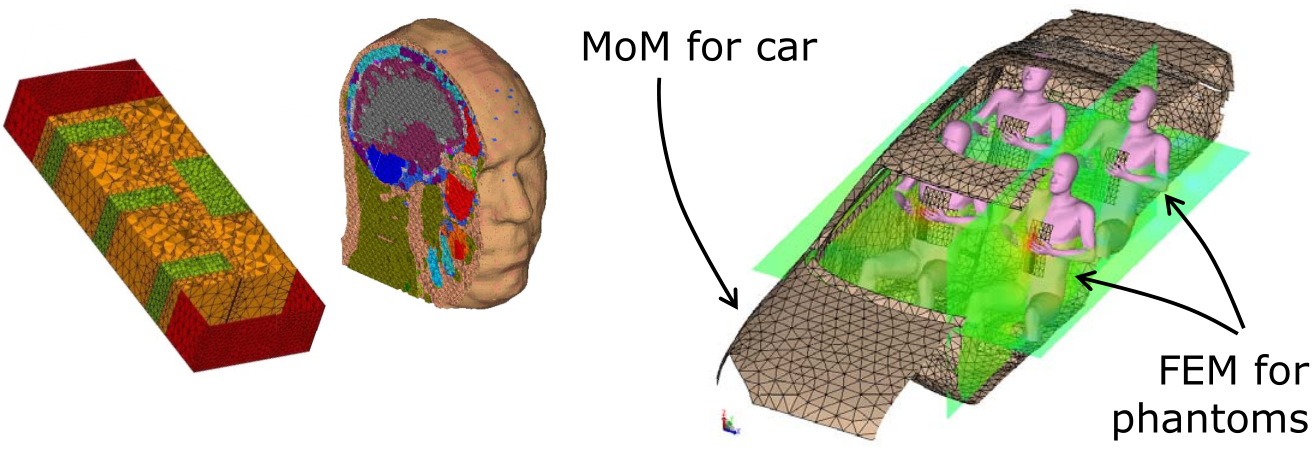Finite Element Method (FEM)
The finite element method (FEM) is a solution method that employs tetrahedra to mesh arbitrarily shaped volumes accurately where the dielectric properties may vary between neighbouring tetrahedra.
The FEM applies to the modelling of inhomogeneous dielectric bodies. It is also well suited to non-radiating microwave components such as shielded filters.

Figure 1. Examples of MoM / FEM hybrid.
For radiating surfaces as well as wires the hybrid FEM / MoM or FEM / MLFMM is invoked and not a pure FEM analysis. The FEM / MoM hybridisation features full coupling between metallic wires and surfaces in the MoM region and heterogeneous dielectric bodies in the FEM region. The MoM part of the solution is calculated first, which results in equivalent magnetic and electric currents that form the radiation boundary of the FEM region. This hybrid method incorporates the strengths of both the MoM and the FEM.
When a structure is bounded only by PEC surfaces and FEM modal ports, Feko recognises that the problem can be solved by just the FEM (fully sparse matrix solution), resulting in a reduction in memory and runtime. For electrically large problems, the hybridised FEM / MLFMM can be used where the MLFMM solves the MoM part of the FEM / MoM problem efficiently.